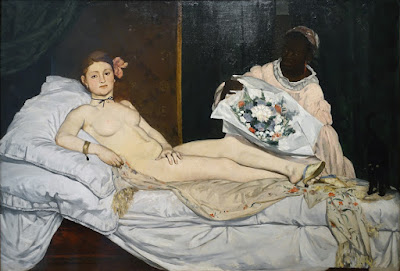Guerrilla Girls Billboard (aka the Guerrilla Girls Poster), 1989

This billboard was commissioned by a coalition of anonymous, female artists known for donning gorilla suits at their meetings. This piece calls out the harsh reality of how museums have been organized in the past, and how they still are for the most part today. This billboard is one of many that the Guerrilla Girls commissioned in order to expose the racial and sexual discrimination that has long been dominant in the art world. The billboard uses a grayscale print of the Grande Odalisque by Jean Auguste Dominique Ingres, with a gorilla head plastered wear the female head should be. This is not only branding the billboard but also criticizing the artwork as well. It’s pointing out that no one really cares about the woman’s individuality, but rather just her body and sexuality. By censoring the face, they show how women’s voices have been silenced in the art world. It is very to the point, the statistics to the right probably haven’t changed much in the last 30 years which is most ...





